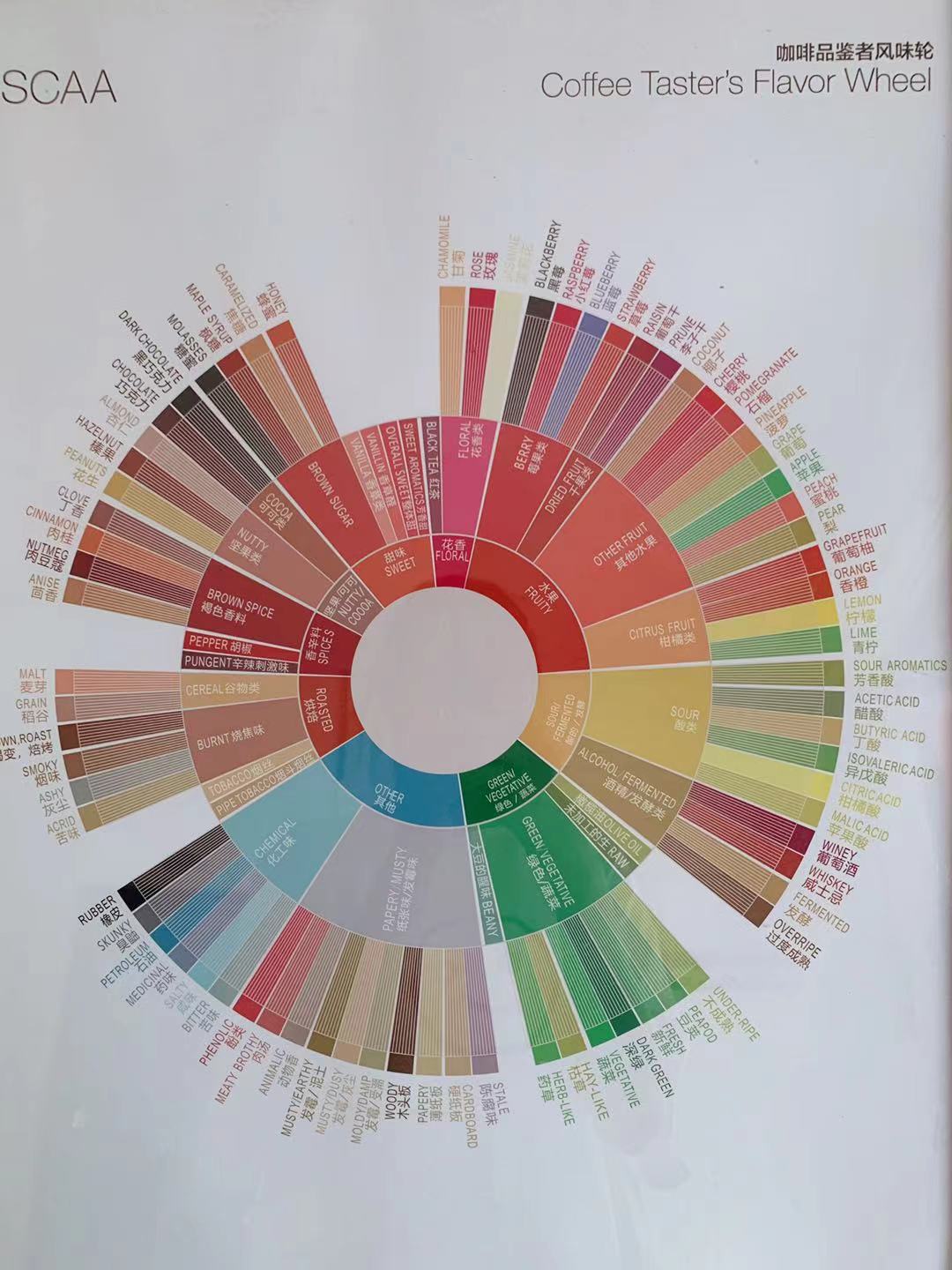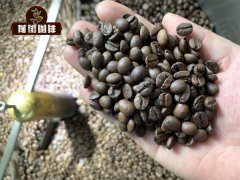Coffee taster's flavor wheel explains that is the flavor wheel a standardized coffee tasting database?
When we eat all kinds of delicious food from an early age, there will be an expression of surprise or satisfaction on our faces. this is the feeling that tasting food brings to us. Tasting the subtle taste of food is not something we learned when we were young. Corn dumplings taste like corn stuffing, and steak tastes like steak-which is why many of us are taught to understand flavor. According to the tasting pattern we are used to, taste coffee into anything other than coffee-especially raspberries, chocolates or flowers.
In Qianjie Coffee, you can taste coffee flavors from all over the world, such as the famous Blue Mountain Coffee, Panamanian Rose Summer Coffee, Ethiopia's Yega Sheffield, this is the first choice, and so on. There has always been a struggle between people with simplified tastes and those with complex tastes. One side thinks that the other side has a wild imagination, while the other side thinks that the other side is narrow-minded. New leaps in sensory science enable researchers and ordinary people to have a deeper understanding of what they eat and drink, while the gap between flavor ideologies is narrowing.

Sensory Science meets Coffee
One of the finest studies in modern sensory science aims to understand the flavor of coffee. The American Fine Coffee Association, in partnership with World Coffee Research, recently launched a new Coffee Taster's Flavor Wheel that contains a colored circle containing a variety of flavors that may be found in black tasteless coffee.
A quick glance at the steering wheel may interest you, and a deeper glance may confuse you. If you doubt whether the coffee might taste like jasmine, rubber or cherry, then you are not alone, but you may need to stay a little longer to judge.
Scientists banded together
In 2009, at the first annual SCAA symposium, it was widely known that the professional coffee industry needed a standardized but approachable way to identify the flavor in coffee. It is generally believed that the old flavor wheel published in 1995 is insufficient or descriptive enough to meet the needs of the fast-growing global coffee industry.
SCAA listened and began working with World Coffee Research to build a newer, standardized way to taste coffee and identify its flavor without having to master straws or explain to ordinary people what a bunch of chemicals and acids are.
For three years, more than 100 scientists were provided to establish a standardized coffee tasting database. The database, called World Coffee Research Sensory Lexicon, carefully and methodically links everyday products to coffee flavors.
Now, anyone can test their senses by comparing the flavor of coffee with the actual standard, rather than tasting the coffee and guessing the current flavor. For example, BlackBerry flavors in coffee can be very close to Blackberry Smucker's Jam, and as the researchers on the project have determined, dictionary users can even assess the intensity of these flavors.
To build the updated wheel, SCAA invited professional coffee tasters and sensory scientists from the University of California, Davis to participate in the final construction phase by organizing tastes. The volunteers classified items in sensory dictionaries by flavor category and subcategory. Then, a program completes the project by creating a "similarity matrix" and then simplifies it to a new flavor wheel, color, and everything.
How does it work?
The items on the flavor wheel are not snatched out of thin air, nor are they wishful thinking. They are recorded tastes that coffee professionals and sensory scientists can identify.
To use this powerful tool, make some fresh coffee and start at the center of the wheel. When you are more familiar with the coffee you are drinking, consider a wider range of flavors. Is it earthy and nutty, floral and sweet? These general observations can help you narrow down your search, even if you are not confident about your diagnosis.
As you continue to identify more flavors, you will naturally move to the edge of the wheel and get a more specific description. This is the purpose of Wheel, so that anyone can enter the coffee tasting phase without formal training or a complex process.
To take the tasting journey to a new level, open the sensory dictionary and perform tests related to the identified flavor attributes to see if it matches. If it is not exactly the same but not completely different, it may be very close and should be kept in the same category and color as the initial guess to find a closer match. If the coffee attribute tastes the same as the item in the dictionary, you have completed the task of both tools.
Taste more
To understand and use the Flavor Wheel, the most important thing anyone can do is taste coffee. You can consider the flavor and aroma of hand-brewed coffee whether it is brewing in the morning or a special visit to a coffee shop. Soon, it will be natural to taste the coffee and understand its flavor ingredients.
Important Notice :
前街咖啡 FrontStreet Coffee has moved to new addredd:
FrontStreet Coffee Address: 315,Donghua East Road,GuangZhou
Tel:020 38364473
- Prev

What's special about Burundi boutique coffee? What roasts Burundi coffee beans are suitable for?
Burundi coffee has been hailed as the Cinderella story of the coffee world and until recently was known for its quality and taste. When coffee was first grown in Burundi in the 1960s, the crop was unfortunately underutilized, contributing to the world of generic commodity coffee. Burundi coffee brings attention to the development and evolution of coffee. Unique flavor profile, Bloom
- Next

How to use hand brewing coffee pot it is better to use high quality coffee beans or individual beans.
If you want to make your own simple and delicious coffee, then the price of hand-brewed coffee is first introduced in front of the street coffee, because the current boutique coffee is very popular with the majority of coffee people, and the special feature of boutique coffee is that its unique flavor is fascinating. It can best reflect the flavor of boutique coffee. Although hanging-ear coffee is also easy to operate, it is related to
Related
- What brand of black coffee is the most authentic and delicious? what are the characteristics of the flavor of the authentic Rose Summer Black Coffee?
- Introduction to the principle and characteristics of the correct use of mocha pot A detailed course of mocha pot brewing coffee is described in five steps.
- Which is better, decaf or regular coffee? how is decaf made?
- How much is a bag of four cat coffee?
- How about four Cat Coffee or Nestle Coffee? why is it a cheap scam?
- Which is better, Yunnan four Cats Coffee or Nestle Coffee? How about cat coffee? is it a fake scam? why is it so cheap?
- How about Cat Coffee? what grade is a hoax? which instant coffee tastes better, four Cat Coffee, Nestle Coffee or G7 coffee?
- Process flow chart of coffee making-Starbucks coffee making process what coffee tastes good at Starbucks
- The top ten best coffee beans in the world Rose summer coffee or Tanzanian coffee tastes good
- Yunnan four cat coffee is good to drink?_four cat coffee is a big brand? four cat blue mountain coffee is fake?

